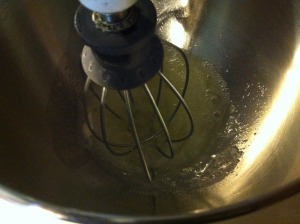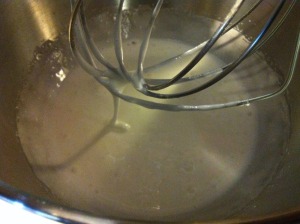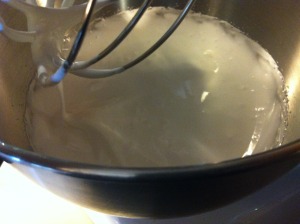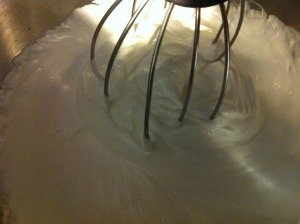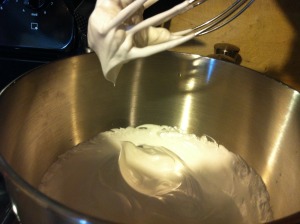Meringue is beautiful on any pie and sometimes simply on it’s own in cookie form. However, like most beautiful things, a true meringue is fragile and must be made with great care.
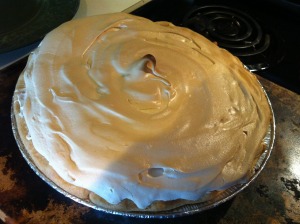
One time, when I was attending Culinary Arts school, each student was assigned a partner and both were to make meringue. My partner, whose name will not be mentioned, was fairly confident and began making meringue right away. She placed all the ingredients in her mixing bowl and began mixing furiously. Her meringue passed through each stage: Te Ribbon, Soft Peaks, Stiff Peaks. She kept on mixing and never realized that finally her meringue mixture had fallen. She had mixed all the air out of her meringue. The stage of Overmixing had been reached and there was no turning back. She had to start over completely and try again. As for me, I was quite a bit more cautious, pausing to check for every stage during the mixing process. Once my meringue reached what I thought were “stiff peaks,” I called the professor over. She confirmed they were “stiff peaks” and instructed me to bake meringue cookies. They turned out perfectly! Here’s the recipe:
Proper Hard Meringue
Ingredients:
-4 egg whites
-3/8 tsp cream of tartar
-6 Tbsp sugar
Using a mixer, beat all ingredients until mixture reaches hard peak or stiff peak stage. (See below) If the hard meringue is being used for pie, top pie with meringue and finish baking in a 300 degrees F oven for 15-20 minutes. If using it for meringue cookies or baked meringue, pipe desired shapes onto parchment lined or greased pan (I prefer parchament lined pans, personally) and bake in oven at 200 degrees F until they are firm and crisp, but not browned.
Tips:
- When making meringue, look for a glossy texture while mixing. If your meringue appears glossy, you know you are on the right track.
- Do not mix continuously. Mix for a minute or two and then pause once you see it thicken. Pause. Check stage. Mix again. Remember making a proper meringue takes a little bit of time. Don’t rush it!
- If it doesn’t turn out like you expect (cracks, takes longer to get to Hard Peak stage, etc), the weather impacts meringue. Humid, Damp and Rainy weather will cause the sugar in the meringue to absorb moisture and crack or “sweat”. Meringue “sweats” when moisture beads up on top of the meringue. You can still eat it (and it is still good), but it may be a bit spongier than usual.
